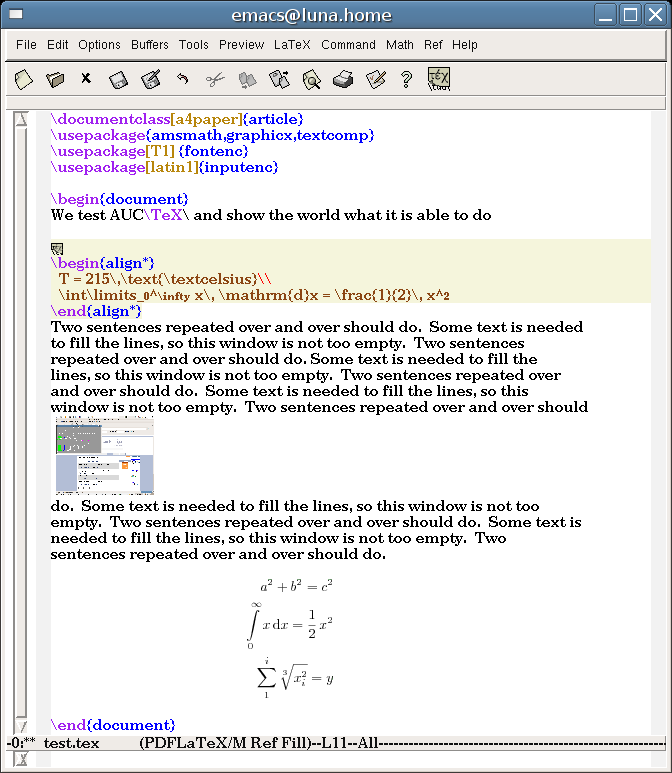I often need to write short reports which are not full blown manuscripts, e.g. Mac screen recording software, free download. annual grant progress reports. Though such documents don’t need to adhere to a strict template, I still want them to look nice. I’ve accomplished this for years by writing directly in LaTeX, but I want to align my process with my recent transition to composing most docs in RStudio/Rmd. Ultimately though, I don’t want to abandon the LaTeX look in the compiled document. Thankfully, RStudio will render a LaTeX pdf, but formatting beyond the defaults (which are still nice!) can be a bit mysterious. This repository holds my working template for such purposes.
Here’s a minimal example of what the defaults within a .Rmd will give you:
Now, two specific things I’d like to change are:
Rstudio Latex Tutorial
- Left-justify the title/author/date section
- Modify the font specs used in section titles
RStudio is an integrated development environment (IDE) for R. It includes a console, syntax-highlighting editor that supports direct code execution, as well as tools for plotting, history, debugging and workspace management. The Sweave is an R function which can combine R programming language and latex documents for reproducing results. This video is a demonstration of how to run.

A solution to these two problems easily generalizes to the broader question of “How do I format the title and H1-H6 specs in the context of LaTeX rendering from .Rmd files?”
To start, we will borrow the LaTeX template R Markdown is currently using (h/t SO). The relevant remote repo is here, and you can copy the local version you’re using into your working directory with this line:
If you look past the pandoc nastiness in this template file (I at least find it nasty, being that I was mostly unfamiliar with pandoc scripting!), you’ll see familiar LaTeX commands that are often surrounded by $if(X)$ statements that are triggered if X appears in your .Rmd YAML. Here’s a straightforward example where, if you have title: in your .Rmd YAML header, the maketitle command will be executed in your LaTeX render:
Rstudio Latex Full

- High quality Latex gifts and merchandise. Inspired designs on t-shirts, posters, stickers, home decor, and more by independent artists and designers from around the world. All orders are custom.
- Take control of your R code. RStudio is an integrated development environment (IDE) for R. It includes a console, syntax-highlighting editor that supports direct code execution, as well as tools for plotting, history, debugging and workspace management.
- I am using the 'compile pdf' button in a.Rnw file in Rstudio, including the following:=print (xtable (longterm), include.rownames=FALSE, floating.
Now the problem feels more tractable: all we have to do is modify the maketitle defaults in the usual LaTeX manner within the template.tex document. Let’s start with the following:
And don’t forget to include template.tex in your .Rmd YAML header like so:
Rendering gives the below, nice!
Next, we clearly need to fix the fact that section titles are now larger than the document title! Let’s do this with the LaTeX sectsty package – you can basically stuff this code anywhere in the preamble, like so:
Let’s also reduce the overall margins a touch via the geometry argument in the YAML while we’re at it. Here’s the full .Rmd:
Rstudio Latex Pdf
Mission accomplished!
Rstudio Latex Mattress
Here’s a bonus I learned along the way. 5k forklift weight. You can send custom arguments to your .tex Qnap ts453a software mac download. doc by simply defining new variables in the YAML header (relevant info in the pandoc docs here). Suppose I want an optional subtitle parameter. This is accomplished like so:
With this trick, you can start to do even fancier things (literally), such as include fancyhdr options. This option is ultimately included in the template.tex provided in the repository, and here’s the relevant YAML and output:
Rstudio Latex Path
Happy R Markdowning!
